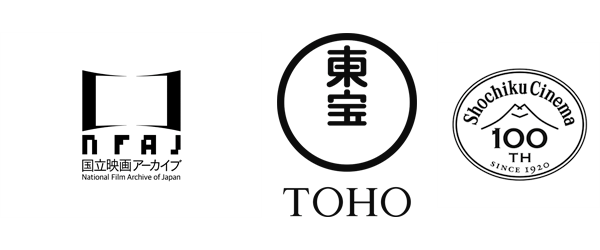Made in 1954, Godzilla was Japan’s first foray into the big budget feature, costing ten times as much as the average Japanese movie and twice as much as the same studio’s Seven Samurai which was released the same year.
Takashi Shimura stars as the revered palaeontologist who uncovers the horrible secret at the heart of the monster (Godzilla is a long dormant Jurassic beast awoken by the atom bomb). The original Godzilla is a fierce indictment of the atomic age. Sold to an American distributor, the film was cut, dubbed into English and retitled Godzilla: King of the Monsters! New scenes were added starring Raymond Burr as an American reporter observing the monster’s rampage from the sidelines. All trace of the anti-nuclear message was excised in the American version.
An enormous hit for the Toho film studio, the original film created a legendary monster that would enter the lexicon of popular culture worldwide, spawning more than 20 sequels over 50 years, countless rip-offs, and a new genre: the kaiju-eiga or Japanese monster movie. Still rated amongst the top 20 Japanese movies of all time, the original Godzilla is perhaps the definitive monster movie – both a bold metaphor for the atomic age and a thrilling tour de force of pioneering special effects.
bfi.org.uk
For a giant monster, Godzilla has had to endure his fair share of being looked down upon. Roland Emmerich, director of TriStar’s 1998 attempt to transfer the Godzilla franchise to Hollywood, declared him to be a great monster who’d never appeared in a great movie, before failing spectacularly to deliver either a great movie or a great monster himself. For more than half a century Godzilla has been subject to such stunted perceptions. A Japanese monster with an Americanised name, an apocalyptic beast born of an atomic blast and belonging to both past and future, or a man in a rubber suit capable of toppling entire city blocks: whatever your take, he doesn’t easily fit our frames of reference.
It’s not surprising to discover, then, that most of the 28 Godzilla movies produced by Toho in Japan between 1954 and 2004 developed format fatigue by the time they reached western audiences. Scenes were added and removed; original soundtrack scores were stripped away, screen-ratios mangled and poorly translated dialogue inserted into the actors’ mouths. It’s hard to ascertain where the pop-culture icon ends and the screen presence begins.
What started out as an operatic, big-budget tale of ‘love versus reason’ costing over 11 billion yen became ‘a psychotic avalanche of electrifying horror’ by the time it hit US shores. Such drive-in hyperbole helped distract audiences from one of the original themes: concern over US atomic tests in the South Pacific. Early in 1954, the crew of the Japanese fishing boat Lucky Dragon No. 5 were showered with radioactive debris from the US hydrogen bomb detonated on Bikini Atoll. The event is reconstructed as a terrifying play of light and shadow glimpsed through darkness at the beginning of the movie. When the film was released in the US two years later this scene was cut, together with references to Nagasaki, the firebombing of Tokyo during World War II and the contamination of rain and soil by fallout from nuclear testing. What US audiences got instead was Raymond Burr as a bemused reporter wandering through Tokyo’s ruins in the wake of Godzilla’s attack.
Ken Hollings, Sight & Sound, March 2006
A contemporary review
A Japanese science fiction film inevitably rouses a certain curiosity as to the brand of monster favoured by Asian filmmakers. In the event, Godzilla turns out to be a cross between a tyrannosaurus, a large dragon and our old friend King Kong. Estimated as 400 feet tall, he roars like a lion, emits great quantities of fire from his ugly mouth, and occasionally waves his front paws in a pathetic, rather dazed manner. Emerging from Tokyo bay, Godzilla lays waste large areas of the city before being destroyed in an underwater ambush by a Japanese scientist armed with an agent designed to destroy the oxygen in water. Extensive special effects and model work help to create an authentic impression of chaos, as Godzilla rampages over skyscrapers, bridges and streets; and his final disintegration, amid a wild confusion of bubbles and threshing limbs, is effectively managed.
Judged simply as another excursion into a gruesome fantasy world, the film merits little more attention than its American or British predecessors. However, an underlying note of social protest is apparent in the characterisation (the scientist is at first reluctant to unleash his terrible secret even against the monster); also, Godzilla’s radioactive appearance is directly attributed to H-bomb experiments. A more obviously symbolic sequence shows a long line of maimed bodies followed by a children’s choir singing a prayer for deliverance slightly reminiscent of the wonderful dirge in Children of Hiroshima. So this fusion of fantasy and reality inevitably harks back to the events of 11 years ago.
The film has reached this country in a curiously disjointed version, part Japanese and part American. Some of the scenes featuring the leading character – a bland, pipe-smoking reporter played by Raymond Burr – seem to have been cut into the picture after its completion. His melodramatic despatches from ‘Tokyo, Japan’ strike a decidedly alien note, his only useful function being as commentator on occasions when the Japanese dialogue is not dubbed. The playing, incidentally, is rather naive by Japanese standards, with a hygienic, Westernised boy-and-girl romance. (Early hopes that the attractive heroine might be a potential Fay Wray are unrealised, as she is never allowed to meet Godzilla at close quarters.) All in all, an effectively savage addition to the cinema’s repertoire of Things, and perhaps a slightly more disturbing sign of the times than most.
James Morgan, Sight and Sound, Winter 1956-7
GODZILLA (GOJIRA)
Director: Ishiro Honda
Production Company: Toho Co. Ltd.
Producer: Tomoyuki Tanaka
Screenplay: Takeo Murata, Ishiro Honda
Original story: Shigeru Kayama
Director of Photography: Masao Tamai
Special Effects: Eiji Tsuburaya, Akira Watanabe, Hiroshi Mukoyama, Kuichiro Kishida
Art Directors: Takeo Kita, Satoshi Chûko
Music: Akira Ifukube
Sound: Hisashi Shimonaga
Cast
Takashi Shimura (Dr Kyohei Yamane)
Momoko Kochi (Emiko Yamane)
Akira Takarada (Hideto Ogata)
Akihiko Hirata (Dr Daisuke Serizawa)
Sachio Sakai (Hagiwara)
Fuyuki Murakami (Dr Tabata)
Ren Yamamoto (Sieji)
Toyoaki Suzuki (Shinkichi)
Takashi Okabe (Dr Tabata’s assistant)
Toranosuke Ogawa (president of company)
Kokuten Kodo
Toranosuke Ogawa
Kenji Sahara
Katsumi Tezuka (Gojira)
Japan 1954
96 mins
JAPAN 2021
100 YEARS OF JAPANESE CINEMA
Early Summer (Bakushû)
Mon 18 Oct 14:30; Tue 19 Oct 20:35; Wed 20 Oct 17:50; Thu 18 Nov 20:20 (+ intro by Professor Alastair Phillips, University of Warwick); Sun 21 Nov 11:30
The Flavour of Green Tea over Rice (Ochazuke no aji)
Mon 18 Oct 18:10; Wed 20 Oct 20:40; Thu 21 Oct 14:40; Mon 8 Nov 14:30; Tue 23 Nov 14:40
Tokyo Story (Tôkyô monogatari)
Mon 18 Oct 20:20; Thu 21 Oct 14:30; Sat 13 Nov 14:10; Tue 30 Nov 14:00
Throne of Blood (Kumonosu-jô)
Tue 19 Oct 18:10; Thu 21 Oct 20:35 (+ Inside Cinema: Akira Kurosawa); Wed 27 Oct 20:30; Tue 9 Nov 20:40; Fri 12 Nov 14:15 (+ Inside Cinema: Akira Kurosawa); Sat 27 Nov 20:50
Early Spring (Sôshun)
Tue 19 Oct 14:30; Wed 20 Oct 20:15; Thu 21 Oct 17:30; Sat 20 Nov 14:50; Tue 23 Nov 17:40
Yojimbo
Tue 19 Oct 20:55; Thu 21 Oct 17:55; Fri 19 Nov 14:30 (+ Inside Cinema: Akira Kurosawa); Fri 26 Nov 18:10; Sun 28 Nov 12:00 15 (+ Inside Cinema: Akira Kurosawa)
An Actor’s Revenge (Yukinojô henge)
Wed 20 Oct 14:15; Mon 1 Nov 14:30; Thu 11 Nov 20:40 (+ intro by Jennifer Coates, The University of Sheffield); Sat 20 Nov 12:15
Souls on the Road (Rojô no reikion)
Fri 22 Oct 18:00; Sat 30 Oct 15:30
A Page of Madness (Kurutta ichipeiji)
Sat 23 Oct 13:00; Mon 15 Nov 20:50
Silent Cinema presents: I Was Born, But… (Otona no miru ehon – Umarete wa mita keredo)
Sat 23 Oct 15:00; Sun 28 Nov 14:45 (+ intro by Bryony Dixon, BFI National Archive curator)
Our Neighbour, Miss Yae (Tonari no Yae-chan)
Sun 24 Oct 12:40; Mon 1 Nov 18:15 (+ intro by season co-programmer Alexander Jacoby)
Humanity and Paper Balloons (Ninjô kami fûsen)
Sun 24 Oct 15:00; Tue 2 Nov 20:45
Talk: A Time of Change and How Japanese Film Bore Witness to It
Mon 25 Oct 18:20
Children of the Beehive (Hachi no su no kodomotachi)
Mon 25 Oct 20:45 (+ intro by season co-programmer Alexander Jacoby); Mon 8 Nov 18:20
The Life of Matsu the Untamed (aka The Rickshaw Man) (Muhomatsu no issho)
Tue 26 Oct 20:40; Sun 7 Nov 11:40
Fallen Blossoms (aka Flowers Have Fallen) (Hana chirinu)
Sun 31 Oct 13:00; Wed 3 Nov 18:20 (+ intro by Japanese film scholar Alejandra Armendáriz-Hernández)
My Love Has Been Burning (aka Flame of My Love) (Waga koi wa moenu)
Fri 5 Nov 18:30; Mon 15 Nov 17:40
Love Letter (Koibumi)
Sat 6 Nov 12:30; Sun 21 Nov 14:40 (+ intro by Irene González-López, co-editor of ‘Tanaka Kinuyo: Nation, Stardom and Female Subjectivity’)
An Inn at Osaka (Ôsaka no yado)
Sat 6 Nov 15:30; Sun 21 Nov 18:00 (+ pre-recorded intro by Professor Hiroshi Kitamura, College of William & Mary)
Godzilla (Gojira)
Sun 7 Nov 15:50; Tue 23 Nov 20:40
Marital Relations (Meoto zenzai)
Sun 7 Nov 18:20; Thu 25 Nov 18:00 (+ pre-recorded intro by Professor Hideaki Fujiki, Nagoya University)
Sansho the Bailiff (Sansho Dayu)
Mon 8 Nov 20:40; Sun 28 Nov 18:20
She Was Like a Wild Chrysanthemum (Nogiku no gotoki kimi nariki)
Tue 9 Nov 18:20; Tue 30 Nov 20:40
Harakiri (Seppuku)
Wed 10 Nov 18:00; Tue 16 Nov 20:25
Night Drum (Yoru no tsuzumi)
Wed 10 Nov 20:50; Tue 16 Nov 18:15
Talk: Female Archetypes in Classical Japanese Cinema
Thu 11 Nov 18:10
Yearning (Midareru)
Fri 12 Nov 18:20; Fri 26 Nov 21:00
Elegant Beast (aka The Graceful Brute) (Shitoyakana kedamono)
Wed 17 Nov 20:50; Sat 27 Nov 18:30 (+ pre-recorded intro by Professor Yuka Kanno, Doshisha University)
Talk: The Family and Home in the Golden Age of Japanese Cinema
Thu 18 Nov 18:00
Onibaba
Fri 19 Nov 20:50; Tue 30 Nov 17:50
Tokyo Olympiad (Tôkyô orinpikku)
Sat 20 Nov 16:40; Wed 24 Nov 18:40
Supported by

In partnership wtih

With special thanks to

With the kind support of:
Janus Films/The Criterion Collection, Kadokawa Corporation, Kawakita Memorial Film Institute, Kokusai Hoei Co. Ltd, Nikkatsu Corporation, Toei Co. Ltd
BFI SOUTHBANK
Welcome to the home of great film and TV, with three cinemas and a studio, a world-class library, regular exhibitions and a pioneering Mediatheque with 1000s of free titles for you to explore. Browse special-edition merchandise in the BFI Shop.We're also pleased to offer you a unique new space, the BFI Riverfront – with unrivalled riverside views of Waterloo Bridge and beyond, a delicious seasonal menu, plus a stylish balcony bar for cocktails or special events. Come and enjoy a pre-cinema dinner or a drink on the balcony as the sun goes down.
BECOME A BFI MEMBER
Enjoy a great package of film benefits including priority booking at BFI Southbank and BFI Festivals. Join today at bfi.org.uk/join
BFI PLAYER
We are always open online on BFI Player where you can watch the best new, cult & classic cinema on demand. Showcasing hand-picked landmark British and independent titles, films are available to watch in three distinct ways: Subscription, Rentals & Free to view.
See something different today on player.bfi.org.uk
Join the BFI mailing list for regular programme updates. Not yet registered? Create a new account at www.bfi.org.uk/signup
Programme notes and credits compiled by the BFI Documentation Unit
Notes may be edited or abridged
Questions/comments? Contact the Programme Notes team by email

